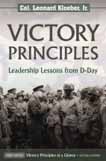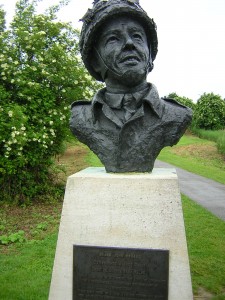Pegasus Bridge – Part One – Getting Ready for a High Priority Mission
Within minutes after midnight on June 6th 1944, the first Allied unit landed in Normandy in six British Horsa gliders. Their mission was given the highest priority by General Montgomery, the land component commander and commander of the British 21st Army Group – to assault and seize two bridges, one over the Caen Canal and the other over the Orne River and hold until relieved. Montgomery knew that he had to seize these critical bridges to prevent the Germans from mounting an armored counter-attack. The bulk of the German Panzer units were positioned farther east in the vicinity of Calais, and if they were able to launch such an attack, the Germans would cause havoc with the British 3rd Infantry landing on Sword Beach. A powerful armored thrust could also roll up each of the five Allied beaches one after the other and disrupt all the Allied landings before they could secure a lodgment and bring in reinforcements. Additionally, the British 6th Airborne Division was landing to the east of these bridges and it would be over these bridges that British armored forces would be brought forward from Sword Beach to reinforce the paratroopers and prevent them from being isloated. The high priority mission to capture these bridges in a coup-de-main assault was given to Major John Howard.
Major Howard was a remarkable leader who came up through the ranks. Before the war, he enlisted in the British Army and served for six years attaining the rank of sergeant before he left the service to become a police officer in Oxford. After the war began, he was recalled back to military service. His leadership skill was quickly recognized by his superiors and not only was he promoted to sergeant major, but also selected to receive a commission as an officer. By 1942 he was promoted to the rank of major and commanded D Company, Oxfordshire and Buckinghamshire Light Infantry as a part of the elite 6th Airborne Division. Howard was masterful trainer, and relentlessly drove his unit to a high standard of readiness through incessant training exercises. When the Overlord Plan for the invasion was conceived and the requirement arose to seize these key bridges, Howard’s unit was selected because the division commander recognized it as one of his best units. Shortly after the mission was given to Howard, his commander told him that he would be given whatever resources he needed including an additional two platoons of infantry, a platoon of engineers, and even a medical doctor who would accompany the assault. Howard not only continued his tough training regimen, but once he knew his mission and had access to current intelligence about the target, conducted multiple practice runs with a variety of scenarios on mock-ups of the targets.
Eventually, his unit was prepared for almost any imaginable contingency that could arise during this difficult night assault. Howard’s plans called for landing his unit in six gilders within close proximity of the bridges and catch the German defenders off guard. Using surprise and shock action, he planned to quickly overcome any resistance and then set up to defend against a counter-attack. While the assault troops seized the bridges, the engineers would disarm any demolitions that the Germans had set to destroy them rather than have them fall into enemy hands. Since the night landing by gliders was extremely hazardous, Howard prepared his men by making sure that everyone was ready to step up if one or more of the gliders missed the target, or if key people were killed or wounded during the assault phase. As his men went into action it was the intense training that had prepared them for this difficult assignment and gave them high confidence that they could accomplish the mission no matter what happened. They were the first Allied unit to land on French soil and they were ready.

